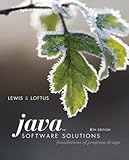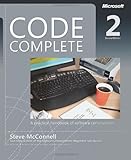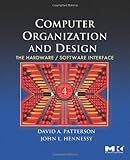|
|
Help |
| Home - Computer - Software (Books) | |
e99 Online Shopping Mall
|
|
Help |
| Home - Computer - Software (Books) | |
| Back | 41-60 of 100 | Next 20 |
click price to see details click image to enlarge click link to go to the store
| 41. Software Engineering for Game Developers (Software Engineering Series) by Ph.D., John P Flynt, Omar Salem | |
 | Paperback: 862
Pages
(2004-11-08)
list price: US$59.99 -- used & new: US$130.88 (price subject to change: see help) Asin: 1592001556 Average Customer Review: Canada | United Kingdom | Germany | France | Japan |
|
Editorial Review Product Description Customer Reviews (5)
| |
| 42. Pharmacy Management Software for Pharmacy Technicians: A Worktext by Inc. DAA Enterprises | |
 | Paperback: 224
Pages
(2007-07-31)
list price: US$92.95 -- used & new: US$21.66 (price subject to change: see help) Asin: 0323049583 Canada | United Kingdom | Germany | France | Japan |
|
Editorial Review Product Description | |
| 43. How We Test Software at Microsoft by Alan Page, Ken Johnston, Bj Rollison | |
 | Paperback: 405
Pages
(2008-12-10)
list price: US$44.99 -- used & new: US$24.43 (price subject to change: see help) Asin: 0735624259 Average Customer Review: Canada | United Kingdom | Germany | France | Japan |
|
Editorial Review Product Description It may surprise you to learn that Microsoft employs as many software testers as developers. Less surprising is the emphasis the company places on the testing disciplineand its role in managing quality across a diverse, 150+ product portfolio. This bookwritten by three of Microsoft’s most prominent test professionalsshares the best practices, tools, and systems used by the company’s 9,000-strong corps of testers. Learn how your colleagues at Microsoft design and manage testing, their approach to training and career development, and what challenges they see ahead. Most important, you’ll get practical insights you can apply for better results in your organization. Discover how to: Customer Reviews (10)
| |
| 44. Java Software Solutions: Foundations of Program Design (6th Edition) by John Lewis, William Loftus | |
 | Paperback: 804
Pages
(2008-03-07)
list price: US$108.00 -- used & new: US$72.00 (price subject to change: see help) Asin: 0321532058 Average Customer Review: Canada | United Kingdom | Germany | France | Japan |
|
Editorial Review Product Description Customer Reviews (70)
| |
| 45. More Joel on Software: Further Thoughts onDiverse and Occasionally Related Matters That Will Prove of Interest to Software Developers, Designers, and ... or Ill Luck, Work with Them in Some Capacity by Joel Spolsky | |
 | Paperback: 320
Pages
(2008-06-24)
list price: US$24.99 -- used & new: US$0.03 (price subject to change: see help) Asin: 1430209879 Average Customer Review: Canada | United Kingdom | Germany | France | Japan |
|
Editorial Review Product Description — Gary Cornell, Cofounder, Apress Since the release of the bestselling title Joel on Software in 2004, requests for a sequel have been relentless. So, we went back to the famed JoelonSoftware.com archives and pulled out a new batch of favorites, many of which have been downloaded over one million times. With Joel’s newest book, More Joel on Software, you’ll get an even better (not to mention updated) feast of Joel’s opinions and impressions on software development, software design, running a software business, and so much more. This is a new selection of essays from the author’s web site, http://www.joelonsoftware.com. Joel Spolsky started his web log in March 2000 in order to offer his insights, based on years of experience, on how to improve the world of programming. This web log has become infamous among the programming world, and is linked to more than 600 other web sites and translated into 30+ languages! Spolsky’s extraordinary writing skills, technical knowledge, and caustic wit have made him a programming guru. With the success of Joel on Software, there has been a strong demand for additional gems and advice, and this book is the answer to those requests. Containing a collection of all–new articles from the original, More Joel on Software has even more of an edge than the original, and the tips for running a business or managing people have far broader application than the software industry. We feel it is safe to say that this is the most useful book you will buy this year. Anyone interested in the software business will truly enjoy this book, but in particular this should be required reading for managers of technical businesses. Customer Reviews (8)
| |
| 46. Eric Sink on the Business of Software (Expert's Voice) by Eric Sink | |
 | Paperback: 320
Pages
(2006-03-20)
list price: US$24.99 -- used & new: US$17.00 (price subject to change: see help) Asin: 1590596234 Average Customer Review: Canada | United Kingdom | Germany | France | Japan |
|
Editorial Review Product Description If you are looking at starting your own software company or just interested in gaining deeper insight into this segment of the industry then go, buy this book. — Pankaj Kumar, Slashdot contributor This book would make my "recommended reading" list with no problem. — Tom Duff, Duffbert's Random Musings Eric Sink on the Business of Software is a selection of the best and most popular essays from the author's website. This insightful collection of essays explore the business concerns that programmers face during the course of their careersparticularly those programmers who are small independent software vendors. Sink also covers issues like starting your own business, and then performing the hiring, marketing, and financesin a style that programmers understand, sprinkled with a touch of humor. Customer Reviews (35)
| |
| 47. Exploratory Software Testing: Tips, Tricks, Tours, and Techniques to Guide Test Design by James A. Whittaker | |
 | Paperback: 256
Pages
(2009-09-04)
list price: US$39.99 -- used & new: US$25.98 (price subject to change: see help) Asin: 0321636414 Average Customer Review: Canada | United Kingdom | Germany | France | Japan |
|
Editorial Review Product Description How to Find and Fix the Killer Software Bugs that Evade Conventional Testing In Exploratory Software Testing, renowned software testing expert James Whittaker reveals the real causes of today’s most serious, well-hidden software bugs--and introduces powerful new “exploratory” techniques for finding and correcting them. Drawing on nearly two decades of experience working at the cutting edge of testing with Google, Microsoft, and other top software organizations, Whittaker introduces innovative new processes for manual testing that are repeatable, prescriptive, teachable, and extremely effective. Whittaker defines both in-the-small techniques for individual testers and in-the-large techniques to supercharge test teams. He also introduces a hybrid strategy for injecting exploratory concepts into traditional scripted testing. You’ll learn when to use each, and how to use them all successfully. Concise, entertaining, and actionable, this book introduces robust techniques that have been used extensively by real testers on shipping software, illuminating their actual experiences with these techniques, and the results they’ve achieved. Writing for testers, QA specialists, developers, program managers, and architects alike, Whittaker answers crucial questions such as: • Why do some bugs remain invisible to automated testing--and how can I uncover them? • What techniques will help me consistently discover and eliminate “show stopper” bugs? • How do I make manual testing more effective--and less boring and unpleasant? • What’s the most effective high-level test strategy for each project? • Which inputs should I test when I can’t test them all? • Which test cases will provide the best feature coverage? • How can I get better results by combining exploratory testing with traditional script or scenario-based testing? • How do I reflect feedback from the development process, such as code changes? Customer Reviews (4)
| |
| 48. Perfect Software: And Other Illusions about Testing by Gerald M. Weinberg | |
 | Paperback: 200
Pages
(2008-08-29)
list price: US$23.95 -- used & new: US$19.61 (price subject to change: see help) Asin: 0932633692 Average Customer Review: Canada | United Kingdom | Germany | France | Japan |
|
Editorial Review Product Description Customer Reviews (12)
| |
| 49. The HCS12 / 9S12: An Introduction to Software and Hardware Interfacing by Han-Way Huang | |
 | Hardcover: 928
Pages
(2009-03-25)
list price: US$166.95 -- used & new: US$137.43 (price subject to change: see help) Asin: 1435427424 Average Customer Review: Canada | United Kingdom | Germany | France | Japan |
|
Editorial Review Product Description Customer Reviews (1)
| |
| 50. Software Agreements Line by Line: A Detailed Look at Software Contracts and Licenses & How to Change Them to Fit Your Needs by Michael Overly, James Kalyvas, Aspatore Books Staff, Aspatore.com | |
 | Paperback:
Pages
(2004-01)
list price: US$49.95 -- used & new: US$49.45 (price subject to change: see help) Asin: 1587623692 Average Customer Review: Canada | United Kingdom | Germany | France | Japan |
|
Editorial Review Product Description Customer Reviews (9)
| |
| 51. Object-Oriented Software Construction (Book/CD-ROM) (2nd Edition) by Bertrand Meyer | |
 | Paperback: 1296
Pages
(2000-03-21)
list price: US$139.32 -- used & new: US$55.54 (price subject to change: see help) Asin: 0136291554 Average Customer Review: Canada | United Kingdom | Germany | France | Japan |
|
Editorial Review Product Description The developer of the acclaimed Eiffel programminglanguage comes through with one of the clearest and most informativebooks about computers ever committed to paper. Object-OrientedSoftware Construction is the gospel of object-oriented technology andit deserves to be spread everywhere. Meyer opens with coverage of theneed for an object-oriented approach to software development, citingimproved quality and development speed as key advantages of theapproach. He then explains all the key criteria that define an object-oriented approach to a problem. Meyer pays attention to techniques,such as classes, objects, memory management, and more, returning toeach technique and polishing his readers' knowledge of it as heexplains how to employ it "well." In a section on advanced topics,Meyer explores interesting and relevant topics, such as persistentobjects stored in a database. He also offers a sort of "Do and Don't"section in which he enumerates common mistakes and ways to avoidthem. Management information isn't the main point of Object-OrientedSoftware Construction, but you'll find some in its pages. Meyerconcludes his tour de force with comparisons of all the keyobject-oriented languages, including Java. He also covers thepotential of simulating object technology in non-object-orientedlanguages, such as Pascal and Fortran. The companion CD-ROM includesthe full text of this book in hypertext form, as well as some toolsfor designing object-oriented systems. If you program computers, youneed to read this book. Customer Reviews (46)
| |
| 52. Medisoft v14 Student At Home Software with Installation Instructions by Susan Sanderson | |
| Paperback:
Pages
(2008-08-25)
list price: US$23.50 -- used & new: US$21.99 (price subject to change: see help) Asin: 0077286545 Average Customer Review: Canada | United Kingdom | Germany | France | Japan | |
Customer Reviews (4)
| |
| 53. Implementing Automated Software Testing: How to Save Time and Lower Costs While Raising Quality by Elfriede Dustin, Thom Garrett, Bernie Gauf | |
 | Paperback: 368
Pages
(2009-03-14)
list price: US$49.99 -- used & new: US$34.98 (price subject to change: see help) Asin: 0321580516 Average Customer Review: Canada | United Kingdom | Germany | France | Japan |
|
Editorial Review Product Description Customer Reviews (11)
| |
| 54. Software Engineering: (Update) (8th Edition) by Ian Sommerville | |
 | Hardcover: 864
Pages
(2006-06-04)
list price: US$137.00 -- used & new: US$22.98 (price subject to change: see help) Asin: 0321313798 Average Customer Review: Canada | United Kingdom | Germany | France | Japan |
|
Editorial Review Product Description THE most current Software Engineering text in the market– quality trusted coverage, practical case studies, strong lecturer support. Customer Reviews (9)
| |
| 55. The Mythical Man-Month: Essays on Software Engineering, Anniversary Edition (2nd Edition) by Frederick P. Brooks | |
 | Paperback: 336
Pages
(1995-08-12)
list price: US$39.99 -- used & new: US$24.24 (price subject to change: see help) Asin: 0201835959 Average Customer Review: Canada | United Kingdom | Germany | France | Japan |
|
Editorial Review Product Description Customer Reviews (151)
| |
| 56. Code Complete: A Practical Handbook of Software Construction by Steve McConnell | |
 | Paperback: 960
Pages
(2004-06-09)
list price: US$49.99 -- used & new: US$31.49 (price subject to change: see help) Asin: 0735619670 Average Customer Review: Canada | United Kingdom | Germany | France | Japan |
|
Editorial Review Product Description Customer Reviews (124)
| |
| 57. Great Demo!: How To Create And Execute Stunning Software Demonstrations by Peter Cohan | |
 | Paperback: 308
Pages
(2005-04-05)
list price: US$23.95 -- used & new: US$19.04 (price subject to change: see help) Asin: 059534559X Average Customer Review: Canada | United Kingdom | Germany | France | Japan |
|
Editorial Review Product Description Customer Reviews (15)
| |
| 58. Computer Organization and Design, Fourth Edition: The Hardware/Software Interface (The Morgan Kaufmann Series in Computer Architecture and Design) by David A. Patterson, John L. Hennessy | |
 | Paperback: 912
Pages
(2008-11-10)
list price: US$89.95 -- used & new: US$46.00 (price subject to change: see help) Asin: 0123744938 Average Customer Review: Canada | United Kingdom | Germany | France | Japan |
|
Editorial Review Product Description Customer Reviews (65)
| |
| 59. Developing International Software by Dr. International | |
 | Paperback: 1104
Pages
(2002-10-09)
list price: US$69.99 -- used & new: US$29.98 (price subject to change: see help) Asin: 0735615837 Average Customer Review: Canada | United Kingdom | Germany | France | Japan |
|
Editorial Review Product Description Customer Reviews (2)
| |
| 60. Applied Software Measurement: Global Analysis of Productivity and Quality by Capers Jones | |
 | Hardcover: 662
Pages
(2008-04-11)
list price: US$75.00 -- used & new: US$43.33 (price subject to change: see help) Asin: 0071502440 Average Customer Review: Canada | United Kingdom | Germany | France | Japan |
|
Editorial Review Product Description Effectively forecast, manage, and control software across the entire project lifecycle Accurately size, estimate, and administer software projects with real-world guidance from an industry expert. Fully updated to cover the latest tools and techniques, Applied Software Measurement, Third Edition details how to deploy a cost-effective and pragmatic analysis strategy. You will learn how to use function points and baselines, implement benchmarks and tracking systems, and perform efficiency tests. Full coverage of the latest regulations, metrics, and standards is included. Customer Reviews (2)
| |
| Back | 41-60 of 100 | Next 20 |